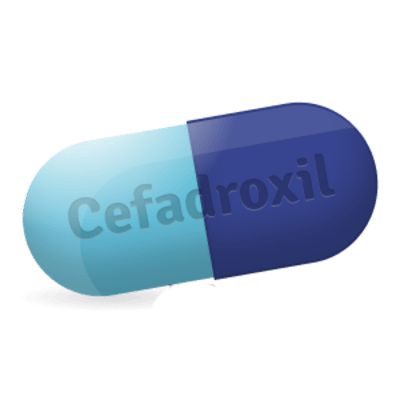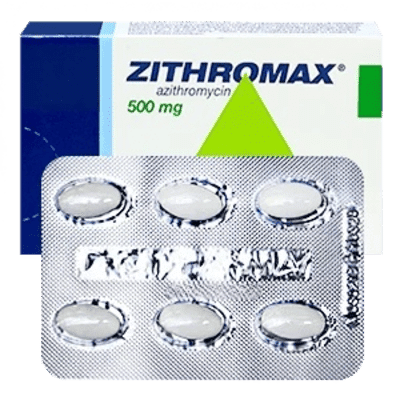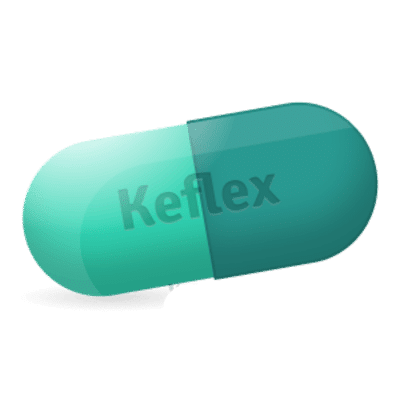I took Cefadroxil as prescribed by my doctor to treat cystitis. After a couple of days I felt a noticeable improvement, the pain and discomfort were gone. The drug was very effective, I did not notice any side effects, even my stomach did not suffer, as it happens with other antibiotics.

Cefadroxil
Active ingredients: Cefadroxil- Quality products
- Support 24/7
- Fast delivery
What is it?
Cefadroxil is an antibiotic from the first-generation cephalosporin group. It is used to combat a wide range of bacterial infections, affecting microorganisms sensitive to the active substance. The main advantage of Cefadroxil is its high effectiveness against gram-positive bacteria such as staphylococci and streptococci, which makes it especially useful in the treatment of respiratory tract infections, skin, urinary tract and other areas.
The drug is usually prescribed in the form of tablets or capsules, but can also be available as a suspension for children. Due to its stable pharmacokinetics, Cefadroxil is well absorbed in the gastrointestinal tract and has a long-lasting effect, which allows it to be taken less often than some other antibiotics. This antibiotic is often used in the treatment of tonsillitis, bronchitis, genitourinary infections and skin diseases caused by a bacterial infection.
Composition
Cefadroxil contains the active substance Cefadroxil monohydrate, which provides its antibacterial action. This molecule belongs to the class of cephalosporins and has a broad spectrum of activity, affecting the cell walls of bacteria, which leads to their death. Excipients included in the composition of the drug may vary depending on the form of release and the manufacturer, but they usually include:
- Microcrystalline cellulose - used to improve the structure and flowability of the powder.
- Magnesium stearate - acts as an anti-caking agent and facilitates the process of pressing tablets.
- Starch - used as a binder to maintain the shape of the tablet.
- Crospovidone - helps accelerate the disintegration of the tablet when it enters the stomach, providing a faster release of the active substance.
In the case of a suspension for children, the composition may include flavorings and sweeteners to facilitate the intake of the drug. However, the main active ingredient, Cefadroxil, remains unchanged and is responsible for the therapeutic effect of the drug.
How to use?
Correct use of Cefadroxil is a key factor in achieving the maximum therapeutic effect and preventing the development of bacterial resistance. The drug is usually taken orally, regardless of food intake, with a sufficient amount of water. The dosage and duration of treatment depend on the type of infection, its severity, as well as individual patient characteristics, such as age, weight and kidney function.
Basic recommendations for the use of Cefadroxil:
- Adults and children over 12 years of age are usually prescribed 500 mg twice a day or 1 g once a day. In more severe cases, the dose can be increased to 2 g per day, divided into two doses.
- For children, the dosage is calculated based on body weight and is about 25-50 mg / kg per day, divided into two doses. In case of severe infections, the dose can be increased to 100 mg / kg.
- The course of treatment usually lasts from 7 to 14 days, depending on the type of infection. It is important to complete the course, even if the symptoms of the disease have disappeared earlier, to prevent the return of the infection and the development of bacterial resistance.
It is necessary to strictly follow the doctors instructions and not change the dosage on your own. Missing a dose can reduce the effectiveness of the treatment, so if you miss a dose, you should take it as soon as possible if there is enough time left before the next dose.
How does it work?
Cefadroxil works by interfering with the synthesis of bacterial cell walls, causing them to die. It belongs to a class of drugs called cephalosporins, which are structurally and functionally similar to penicillins. Cefadroxil inhibits enzymes responsible for building peptidoglycan, the main component of the bacterial cell wall. Without this important structural element, the cell wall becomes weak and cannot withstand the pressure inside the cell, causing the bacteria to break down.
The drug is effective against a range of gram-positive and some gram-negative bacteria. It is resistant to beta-lactamases, enzymes that some bacteria produce to protect themselves from antibiotics such as penicillins. This makes Cefadroxil an effective choice for treating infections caused by strains that are resistant to other antibiotics.
Indications
Cefadroxil is prescribed for the treatment of various bacterial infections caused by microorganisms sensitive to it. The broad spectrum of action of this antibiotic allows it to be used to treat various diseases affecting different body systems. The main indications for the use of Cefadroxil include:
- Upper and lower respiratory tract infections such as tonsillitis, pharyngitis, sinusitis, bronchitis and pneumonia.
- Urinary tract infections including cystitis, pyelonephritis and urethritis.
- Skin and soft tissue infections such as folliculitis, abscesses, furuncles and cellulitis.
- Bone and joint infections including osteomyelitis and septic arthritis.
- Prevention of infectious complications after surgery, especially in cases where there is a high risk of wound infection.
The use of Cefadroxil should be based on the results of bacteriological testing and susceptibility of microorganisms, which allows choosing the most effective treatment. It is important to remember that antibiotics, including Cefadroxil, do not work against viral infections such as influenza or the common cold.
Contraindications
Cefadroxil, like any other antibiotic, has a number of contraindications that must be taken into account before starting treatment. These restrictions are related to the possibility of developing adverse reactions in certain groups of patients. The main contraindications include:
- Hypersensitivity to Cefadroxil or other cephalosporin antibiotics, as well as penicillins, since cross-allergic reactions are possible.
- History of severe allergic reactions such as anaphylactic shock, Quinckes edema or Stevens-Johnson syndrome caused by any antibiotics.
- Impaired renal function - dosage adjustment or close medical supervision is required, since the drug is excreted through the kidneys and its accumulation can lead to toxic effects.
- Pregnancy and lactation - use is possible only for strict indications and under the supervision of a doctor, since the safety of using Cefadroxil in these periods has not been fully established.
Patients with chronic diseases such as bronchial asthma or diabetes mellitus should inform their doctor about their condition to avoid possible complications. If any suspicious symptoms occur after starting to take Cefadroxil, you should stop using it immediately and seek medical advice.
Side effects
Like any antibiotic, Cefadroxil can cause side effects, although most patients tolerate it well. These adverse reactions can vary in severity and frequency, so it is important to be informed and monitor your condition carefully while taking the drug. The most common side effects include:
- Gastrointestinal disorders such as nausea, vomiting, diarrhea or abdominal pain. These symptoms usually resolve on their own and do not require stopping treatment.
- Allergic reactions, which can manifest as skin rash, itching, hives or, in rare cases, angioedema. If allergic reactions occur, stop taking the drug immediately and consult a doctor.
- Liver disorders, manifested as increased levels of liver enzymes (ALT, AST) in the blood. These changes are usually temporary and disappear after the end of the course of treatment.
If serious side effects occur while taking Cefadroxil, such as severe diarrhea with blood, a sharp drop in blood pressure or breathing problems, you should seek immediate medical attention. It is also important to remember that long-term use of antibiotics can lead to the development of superinfections caused by drug-resistant microorganisms.
Frequently asked questions
Cefadroxil Reviews and Experiences
Used Cefadroxil to treat boils on the skin. The infection quickly subsided, and after a week the inflammation was almost invisible. However, on the second day after starting the treatment, a slight rash appeared, but the doctor said that this could be an individual reaction and it quickly passed after completing the course. Overall, the drug helped, but there were some side effects.
Cefadroxil was prescribed to a child for tonsillitis. The doctor was alarmed by the plaque on the tonsils, and he immediately prescribed this antibiotic. The suspension turned out to be quite convenient to use, the child drank it without any problems. Literally on the third day, the condition significantly improved, the temperature dropped. We are very pleased with the result.









